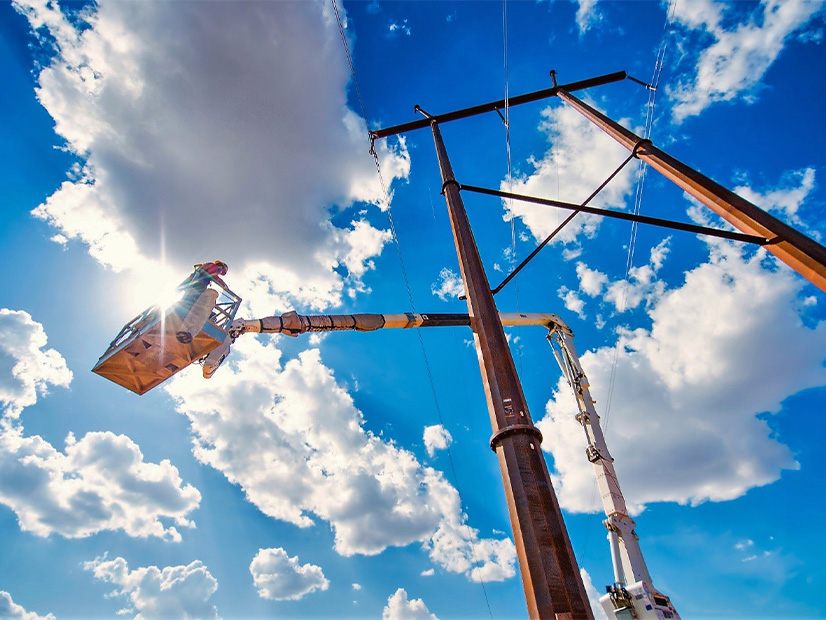FERC last week partially granted three complaints by SPP members alleging
the grid operator violated its tariff’s terms and
generator interconnection agreements (GIAs)
and engaged in unduly discriminatory and
preferential practices related to its revenue
crediting process under Attachment Z2 (EL19-75, EL19-96, EL19-93).
The commission, however, rejected a similar complaint from Oklahoma Gas & Electric (EL19-77).
EDF Renewables, Enel Green Power North America, NextEra Energy Resources and Southern Power filed a joint complaint in May 2019 under three sections of the Federal Power Act. They argued that they are entitled to revenue credits associated with transmission service that could not have been provided but for the use of network upgrades for which they paid.
Under Attachment Z2, SPP transmission customers that fund network upgrades can be reimbursed through transmission service requests, generator interconnections or upgrades that could not have been honored “but for” the upgrades. FERC in 2020 approved the RTO’s request to replace revenue credits with incremental long-term congestion rights. (See FERC Approves SPP’s 2nd Go at Dropping Z2 Credits.)
The developers argued their companies had together funded, through their respective GIAs, almost $95 million in network upgrades owned by SPP transmission owners on the RTO’s system. The first of the upgrades became operational in 2010, they said, but SPP took until 2016 to add the software required for Z2, collecting charges for service that relied on network upgrades.
In their complaint, the developers pointed out that FERC said in a 2016 response to an SPP waiver request that the grid operator had already determined that they are eligible for revenue credits associated with their funded creditable upgrades.
FERC agreed with the complainants that SPP had violated the tariff, GIAs and the filed-rate doctrine, but it denied the remaining allegations. It also declined to set the proceeding for hearing and settlement judge procedures and to grant the developers’ requested relief, that being the full revenue credits and interest for transmission service SPP provided over the creditable upgrades since 2010. The commission said the underlying facts were “materially the same” as a D.C. Circuit Court of Appeals ruling in an OG&E complaint against SPP.
“We believe that exercising our authority under [Section 309 of the Federal Power Act] under these circumstances would be inappropriate for the same reasons,” FERC said.
FERC Commissioner James Danly agreed in a concurring statement to all four orders, writing that “FPA Section 309 cannot be invoked to provide equitable exceptions or retroactive modifications to the filed rate. … It is not a matter of discretion.”
The commission used the same arguments and reached the same decisions in complaints filed in September 2019 by Cimarron Windpower II.
It relied on some of those arguments in accepting and rejecting parts of Western Farmers Electric Cooperative’s August 2019 request that it be able to recover and retain revenue credits that it said it was entitled to under its network integration transmission service agreement and Attachment Z2. FERC found the attachment does not guarantee full cost recovery for network upgrades “but merely provides the opportunity to recover such costs.”
FERC rejected OG&E’s complaint, filed in May 2019, that being required to refund revenue credits related to the use of OG&E’s transmission facilities would violate Attachment Z2, the filed-rate doctrine, and the sponsored upgrade agreement between OG&E and SPP. The utility had also argued SPP must pay restitution if it required the revenue credits be refunded.
The commission responded by saying the upgrade agreement does not supersede the tariff, as OG&E suggested, because the agreement expressly incorporates the tariff. SPP does not have the revenue credits to provide as restitution to OG&E; those funds are with the transmission customers, who cannot be invoiced for credit payment obligations because of the tariff’s one-year billing adjustment limitation, FERC said.
SPP had been trying to replace Z2 credits since 2016, when controversy arose after the grid operator identified eight years of retroactive credits and obligations that had to be resettled after staff failed to apply credits. (See SPP Invoices Lead to Confusion on Z2 Payments.)
The commission granted the grid operator a retroactive waiver of its tariff so that it could invoice transmission service customers for Z2 credit payment obligations dating back to 2008. However, it reversed course in March 2019, saying its original decision was prohibited by the filed-rate doctrine and the rule against retroactive ratemaking.
FERC in March 2019 issued a voluntary remand of the waiver following a D.C. Circuit ruling in a separate waiver case involving PJM. The court ruled in 2021 that the commission acted correctly in reversing the retroactive waiver. (See DC Circuit Upholds FERC Ruling on SPP Z2 Saga.)




